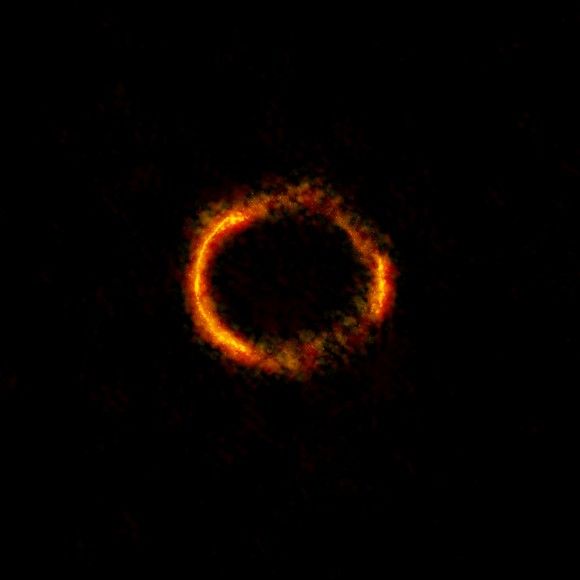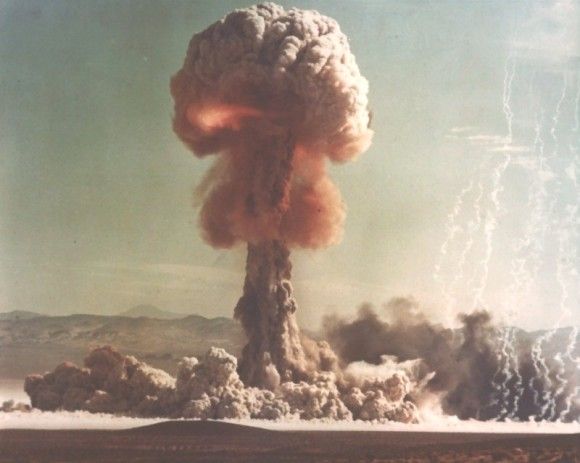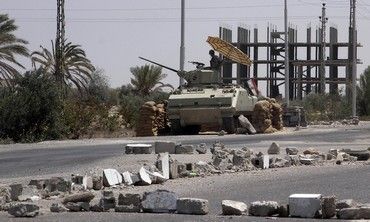Heavy Equipment Headed East – Anakonda Exercise as a Test of NATO Mobility
Polish Anakonda exercise, scheduled to take place in June this year remains without a precedence, when it comes to scale of the operation and scope within which the collective defence capabilities are going to be verified. Particular emphasis is placed on deployment of large formations of the US Army to Poland, which constitutes a demonstration of capability of providing realistic support, should any crisis break out.
The Scenario of the Anakonda exercise, embedded within a wider allied tactical and operational context, assumes that a deterrence operation is going to be carried out against the Red Alliance which is intending to take over a part of the Baltic Sea region, including the Baltic Republics and part of the territory of Poland. During the exercise, complex operational activities related to a collective defence mission will be carried out. Not only will the event involve the land forces, as special forces or cyber-units are also expected to participate.
The whole exercise is carried out within the context before the conflict even breaks out. Hybrid operations are the main focal point of the scenario. The ultimate goal is to strategically deter [the enemy], showcase the coherence of the Alliance, level of training in the Polish and Allied units and demonstrate the transition from a national to a joint operational structure. Within the framework of the second stage, by carrying out combat integration, we go towards execution of a defensive operation in line with Article 5.
In order to demonstrate the allied collective defence capabilities, and capacity to deter the potential aggressor, it is also required for NATO to deploy its forces to the endangered territory. A key role here will be played by the US Army elements, which are to be involved in the operation in the highest numbers. It is expected that units of the 1st Brigade of the 3rd Armoured Division, and of the 2nd Cavalry Regiment, with the latter elements using the Stryker IFVs, airborne elements, also units which are going to be deployed directly from the CONUS, as well as air defence elements are all going to be involved in the operational activities within the Polish territory.
In total, the United States are going to deploy almost 14 thousand soldiers from a variety of units, all of whom are expected to participate in the exercise. For the first time in history, such a large group of the US troops will be trained in Poland. Scope of the exercise covers deployment of the forces in a complex sense of that term, also in conditions when the enemy applies relevant countermeasures, acting against the ICT infrastructure.
This issue is especially important, since in a situation of a real threat, rapid deployment of the NATO units is an imperative condition which needs to be met in order to bolster the defensive capabilities and, potentially, to deter the aggressor. Within the framework of Anakonda, forces of the 1st Brigade of the 3rd Armoured Division will move from Poland to the Baltic Republics, which will expand the scope of tasks expected to be carried out by that unit in the Central Europe.
The US armoured units have already begun their preparations for the exercise. Elements of the European Activity Set which may be used by up to a brigade-sized element which is usually permanently stationed in the United States, are expected to be utilized within the exercise. The set includes 90 M1A2 Abrams tanks, ca. 130 M2/M3 Bradley IFVs, along with a variety of wheeled vehicles i.e. trucks, which are being normally used by an armoured brigade.

In April, the brigade troops have received and checked the equipment coming from the storages located within the territory of Germany. A series of training activities, including live-fire training, was also carried out. Elements of the US Army aviation units were also deployed to Germany. They are going to use the UH-60M Black Hawk helicopters, within the scope of the Anakonda operation.
Preparations of the allied forces, for the Anakonda exercise, are already being executed. “Honor” vessel, transporting the military equipment, arrived in Szczecin at the beginning of May. Moreover, a memorandum of understanding has been concluded, regulating the collaboration between the Polish and American units during the Anakonda Exercise. All of the steps above constitute a foundation, for carrying out the largest ever allied complex military exercise focused on collective defence within the territory of Poland, with involvement of the US forces.
Deployment and beyond
During the Anakonda-16 training exercise, a number of other elements, related to verification of the options available within a potential defensive operation in Central Eastern Europe, is going to be trained. Here we mean for example a simulated strike against a Russian S-400 class SAM battery which constitutes an important element of the defensive tactics implemented by the Armed Forces of Russia. Joint fire mission is going to be implemented within that scope, involving combat aircraft, helicopters and artillery.
Next, fire control of joint forces is another issue covered. For the first time in history we would like to carry out an experiment at the Drawsko firing range. It is quite important, since it is one of the research goals. S-400 SAM site is going to be simulated in the field. This is the primary SAM system used by the Russian Federation. And this will be complemented with a joint fire mission. We want to know what the effect is going to be. What is the “joint” character about? Six artillery divisions, including rocket artillery, tube artillery and mortars will carry out shelling, with simultaneous strikes executed by the attack helicopters and aircraft. Such element of operations is going to be trained for the first time in history.
Scenario of the exercise is also particularly important. The plan is tailored to the real geopolitical situation in the Baltic area. Skolkan scenario context is the starting point. As mentioned above, realistic cyber-space jamming is also going to be – for the first time in history – carried out.
Even though the Anakonda exercise is organized regularly, according to the statement made by General Tomaszycki at the meeting of the parliamentary National Defence Committee, this year is the first time when territorial defence units are expected to participate in the undertaken activities. This component will cooperate with the NATO forces, US Military Police and a German engineering element. This is especially important in the light of the fact, that any defensive operation would require the elements of territorial defence and reserve forces to collaborate with the allies, alongside the regular front-line elements.
It is also worth to mention the fact that during the last edition of the operation, back in 2014, the allied involvement was limited, as only the airborne and light infantry elements participated in the operation, with an exception of a Czech company deployed by a mechanized brigade of the Czech Army. This year, the United States will deploy their forces within the scope which is to make it possible to simulate the collective defence operation in a complex manner.
Obviously, staff-command training activities are also going to be conducted in parallel with the Anakonda exercise. According to General Tomaszycki, operations that are undertaken after the conflict breaks out are going to be the main element of the training. Finally, the trained forces will also go through a process, in which the command jurisdiction is to be changed (from national to NATO level).
European states deploy forces which are quantitatively much smaller than the component hailing from the United States, Ca. 1200 troops are going to be deployed from Spain and the United Kingdom. Both countries assign forces for the NATO VJTF component this year. VJTF units will also be involved in the Anakonda exercise. This makes it possible to verify their capabilities in a wider context of a defensive operation.
Remaining European states will deploy much more modest forces – here we mean Germany, Romania, V4 Group states, the Netherlands or the Baltic states. A question arises – why NATO member states whose potential is most significant, including Germany, France or Italy, are not getting involved in this type of operations. On the other hand, VJTF participation is a result of the provisions defined during the Newport summit, endorsed by all of the NATO member states, thus it is focused on the “Spearhead” element.
General Tomaszycki, during the meeting of the Parliamentary National Defence Committee, mentioned the difficulties related to the Berlin’s consent for transfer of the US forces through the territory of Germany. Even though the German authorities justify the above stance with road works, emergence of such a problem shows that the response schemes still need to be refined. Should an actual threat arise, the situation as the one above may result in diminished readiness of the allied forces. The problems related to deployment of the relevant forces caused by legal limitations had also been discussed earlier by General Ben Hodges, SACEUR.
Notably, the Air Force of Bulgaria is expected to take part in the Anakonda-16 operation, which is probably related to tightening of the military collaboration, visible e.g. in the overhaul and maintenance works memorandums concerning the Bulgarian MIG-29 jets. The maintenance works are expected to be carried out at the Polish aviation facilities. The operation will also involve units from a variety of NATO partner nations, including Ukraine.
What’s next?
Anakonda exercise is, without any doubt, an important element of the process in which the defensive capabilities of Poland are enhanced. For the first time in history, this allied setting is going to be verified in a manner which is so complex. Key role, among the NATO member states, is played by the USA. The American involvement will constitute a demonstration of the US presence and geopolitical engagement in Europe. It will also provide NATO with an opportunity of conducting training related to the key capabilities, required in order to defend the Eastern Flank. It shall be stressed that scale of the exercise will also make it possible to check the capacity of the supply chain and logistics offered by the host nation, which seem to be at least as important as the field training activities.
The exercise, to a limited extent, involves the European states, including the nations which have assigned their units to participate in the NAZO VJTF element composition. We must hope that regular exercises of a similar scale will become a permanent element of training for the Polish Army, in the upcoming years.







